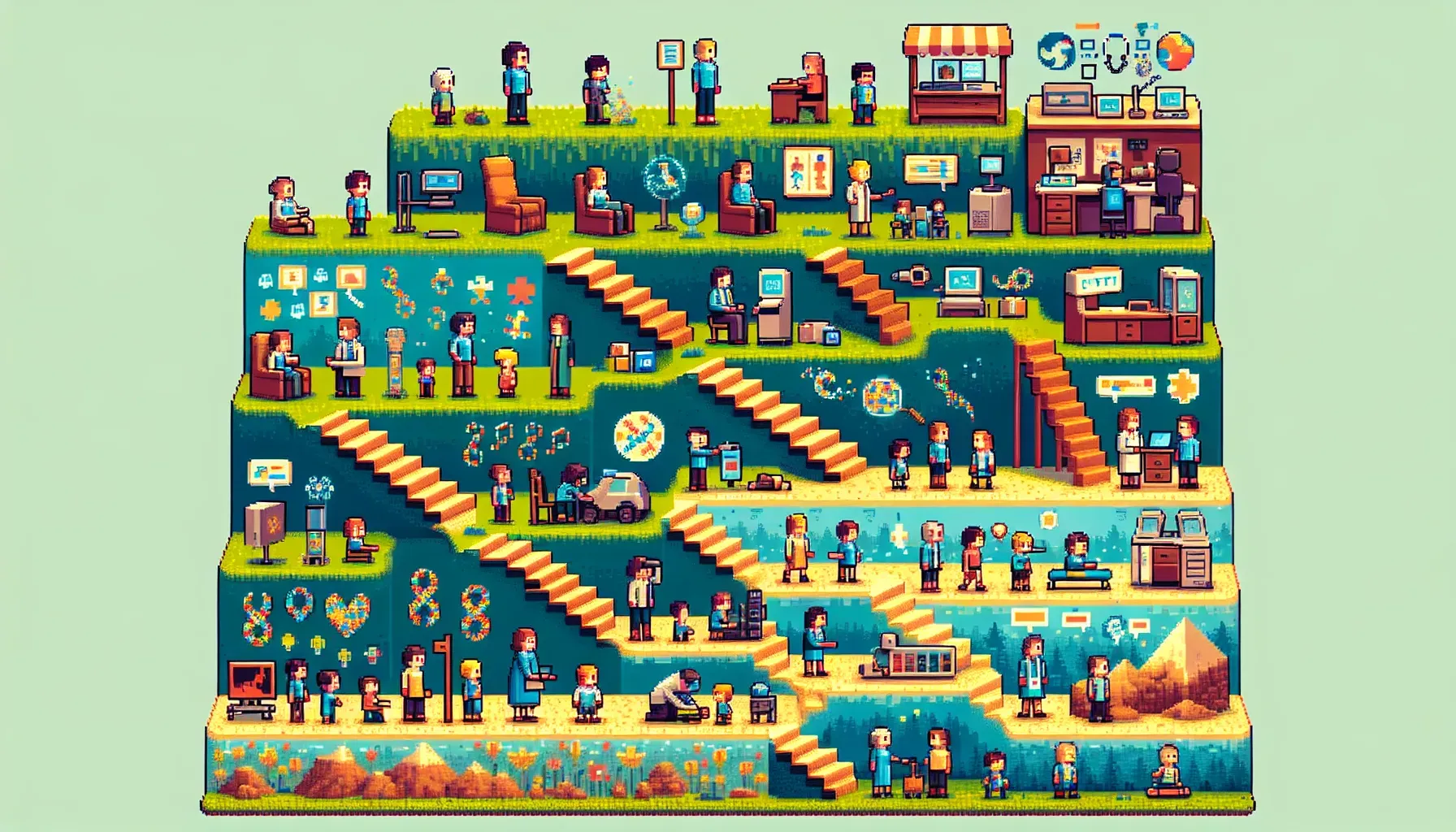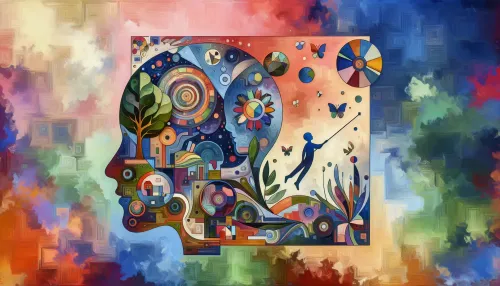The Evolution of Autism Diagnosis: Then and Now

As we step into the future, the landscape of autism diagnosis undergoes a remarkable transformation, influencing how we perceive, identify, and support individuals on the spectrum. Join HorizonsMind Blog as we journey through time and explore the profound shifts in diagnostic paradigms, from their historical origins to promising predictive analyses and early intervention strategies.*
In the early 20th century, autism diagnosis was an enigma, with few documented cases and limited understanding. It was not until the pioneering work of Leo Kanner and Hans Asperger that autism began to gain recognition as a distinct developmental disorder. Kanner's seminal paper in 1943, detailing case studies of 11 children with "autistic disturbances of affective contact," marked a milestone in the history of autism diagnosis. As our knowledge evolved, the diagnostic process transitioned from mere observations to structured assessments, unveiling the complex nature of autism spectrum disorder (ASD).
The Origin of Autism Diagnosis
The diagnostic criteria for autism have undergone significant revisions, reflecting a deeper comprehension of its multifaceted nature. From the introduction of Asperger's syndrome in 1981 to the integration of sensory sensitivities and repetitive behaviors in subsequent updates, diagnostic standards have expanded to encompass the diverse expressions of ASD. With each iteration of diagnostic manuals, such as the DSM-5, clinicians have refined their approach to capture the nuanced manifestations of autism, ensuring more accurate identifications and tailored interventions.
Refining Diagnostic Criteria Over the Years
Empowered by a wealth of information and advocacy platforms, parents have become pivotal in driving awareness and understanding of autism. Their firsthand experiences have contributed to a grassroots movement that demands attentive and comprehensive diagnostic processes. Concurrently, practitioners have shifted towards collaborative approaches, valuing parental insights while leveraging their expertise to navigate the intricate terrain of autism diagnosis.
As we embark on an era characterized by inclusivity, there is a growing emphasis on embracing the spectrum nature of autism. The traditional binary view has given way to a more dynamic framework that acknowledges the varied strengths and challenges exhibited by individuals across the spectrum. This paradigm shift has necessitated diagnostic tools that are sensitive to this diversity, fostering a culture where every individual's unique profile is acknowledged and accommodated.
Related Article: Nurturing Independence: Practical Ways to Support Autistic Childrens Daily Living Skills
The Role of Parents and Practitioners in Diagnosis
Advancements in technology have unlocked unprecedented avenues for understanding autism at a molecular level. Cutting-edge imaging techniques and genetic studies are unraveling the intricate underpinnings of ASD, offering insightful markers that could potentially enhance diagnostic precision. By deciphering the genetic architecture and neural circuitry associated with autism, these breakthroughs hold promise for refining diagnostic modalities and tailoring interventions based on individual genetic profiles.
Incorporating a Spectrum Perspective in Diagnoses
The societal perception of autism has matured from one of stigma to that of a dynamic support system. Advocacy initiatives, firsthand narratives, and depictions in popular media have fostered an environment where autism is increasingly viewed through a lens of acceptance and inclusion. This evolving cultural mindset not only facilitates early identification but also nurtures an environment where individuals with autism can thrive unencumbered by societal misconceptions.
Related Article: Exploring Everyday Challenges: Helping Autistic Children Thrive in a Neurotypical World
The Impact of Technology on Autism Diagnosis
Educators play a pivotal role in identifying developmental divergences among children and adolescents. Recognizing this imperative, professional development initiatives have shifted towards equipping educators with nuanced insights into various manifestations of autism. This concerted effort aims to empower educators with tools to identify atypical behaviors early on, fostering an inclusive educational environment that caters to diverse learning needs.
Across different regions, varied cultural norms shape perceptions and practices related to autism diagnosis. While some societies exhibit proactive approaches with readily available resources, others face hurdles due to limited awareness or stigmatization. Understanding these global disparities is crucial in shaping more inclusive and accessible diagnostic frameworks worldwide.
Cultural Shifts in Perception of Autism
Despite advancements, challenges persist in ensuring timely and accurate diagnoses. Misdiagnosis remains a concern, often stemming from overlapping symptoms with other conditions or diagnostic overshadowing due to co-occurring disorders. Addressing these challenges demands a multifaceted approach that integrates comprehensive assessments, interdisciplinary collaboration, and ongoing refinement of diagnostic protocols.
Related Article: Balancing Autistic Children's Daily Life: Understanding the Role of Routine and Structure
Training Educators for Effective Diagnosis
Looking ahead, predictive analytics fueled by machine learning algorithms hold tremendous potential in identifying atypical developmental trajectories at an early stage. By leveraging vast datasets and biomarkers indicative of autism risk, predictive models can usher in an era of proactive interventions that preemptively address developmental divergences before they escalate. Such pioneering strategies stand poised to redefine the landscape of autism diagnosis by ushering in personalized interventions tailored to each individual's unique developmental trajectory.
As we envision this future horizon for autism diagnosis, it becomes evident that our collective efforts are steering us toward a landscape characterized by heightened awareness, precision diagnostics, and early interventions that foster holistic support for individuals on the spectrum.
Frequently Asked Questions
In the early 20th century, autism diagnosis was largely misunderstood, with few documented cases. It wasn't until Leo Kanner and Hans Asperger's work that autism gained recognition as a distinct developmental disorder. Kanner's 1943 paper marked a significant milestone, transitioning the diagnostic process from simple observations to structured assessments that revealed the complexities of autism spectrum disorder (ASD).
Predictive analyses using machine learning algorithms have the potential to revolutionize autism diagnosis by identifying atypical developmental patterns early. By analyzing vast datasets and biomarkers, these models can facilitate proactive interventions tailored to individual needs, ultimately redefining how we approach autism support and care, ensuring timely and personalized strategies for those on the spectrum.
Parental involvement is crucial in autism diagnosis as parents provide valuable insights based on their firsthand experiences. Their advocacy has led to increased awareness and understanding of autism, pushing for more accurate diagnostic processes. Collaborative approaches between parents and practitioners enhance the overall effectiveness of identifying and supporting individuals on the spectrum.
Check Out These Related Articles

Nurturing Independence: Building Life Skills in Autistic Children

Cultivating Independence: Equipping Autistic Teens with Life Skills for Adulthood

Unveiling Leisure and Recreation: Encouraging Meaningful Hobbies for Autistic Children
